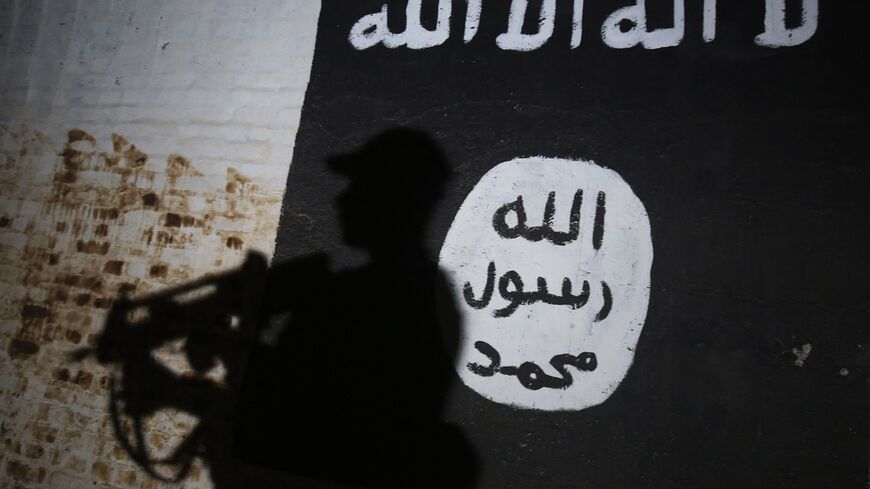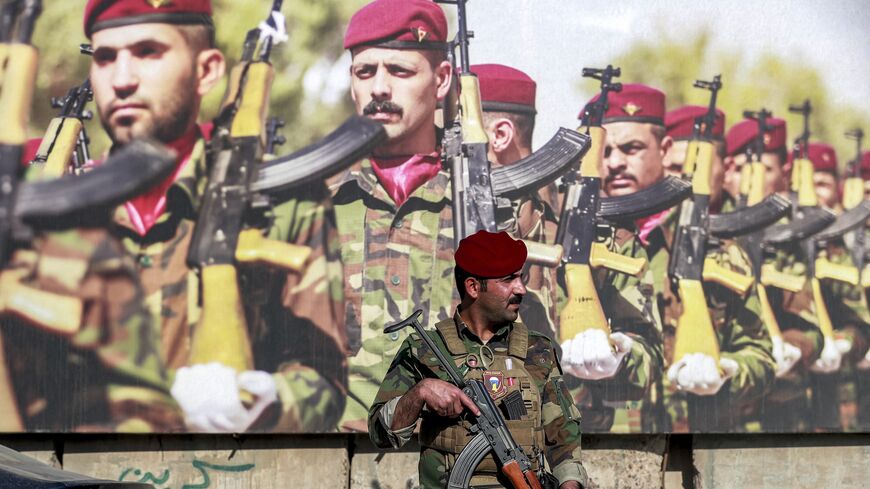Iraq says it killed prominent ISIS leader as group resurfaces
The Islamic State remains active in Iraq as Baghdad and Washington discuss winding down the US presence in the country, though the group is relatively weak at present.

Iraqi forces announced the death of a prominent ISIS fighter on Thursday as the group shows signs of resurgence in the country.
Iraq’s Joint Operations Command said in a statement that Samir Khader Sharif Shihan Al-Nimrawi was killed by government forces and was responsible for the transfer of fighters, weapons and explosives between Iraq and Syria.
The command did not provide further details on Nimrawi, including where he was killed or his affiliation. It described him as one of the “terrorist leaders whose hands are stained with the blood of innocents in Anbar” — referring to the province in western Iraq. Anbar borders Syria as well as Jordan.
The Iraqi media outlets Shafaq and Al-Rafidain referred to Nimrawi as a leader in ISIS.
Why it matters: The death of Nimrawi comes as ISIS remains active in both Iraq and neighboring Syria. On Monday, ISIS killed 11 truffle hunters in northern Syria.
At a House Armed Services Committee hearing last week, Gen. Michael Kurilla said that US intelligence estimates there to be around 1,000 ISIS fighters at large in Iraq. Kurilla heads US Central Command.
In its report on ISIS for the fourth quarter of 2023, the US Defense Department’s Office of Inspector General said, “ISIS continued to conduct attacks against civilians, Iraqi and Syrian partner forces and regime forces in Syria.”
“The group remained incapable of mounting large, complex attacks locally or externally, even as coalition forces increased their focus on force protection due to the Iran-aligned militia attacks,” said the Office of Inspector General.
But ISIS’ capabilities today are relatively diminished compared with years past, according to the report.
“In Iraq, due to counter-terrorism pressure, the ISIS threat was largely contained, though ISIS continued to exploit security gaps between federal Iraq and the Iraqi Kurdistan Region and conducted sporadic attacks, mostly in Shia communities,” said the office, describing ISIS as being in “survival posture” in Iraq and Syria.
The security gaps refer to the border between federal Iraqi territory and areas controlled by the Kurdistan Regional Government. Some regions, including oil-rich Kirkuk, are disputed by the two authorities.
The US military maintains around 2,500 personnel in Iraq as part of the global coalition to defeat ISIS, but the presence could end soon. The United States and Iraq began talks in January on terminating the anti-ISIS coalition’s mission. A second round occurred last month.
The discussions came in response to retaliatory US strikes on Iran-backed militias in Iraq. The militias have long attacked US forces in Iraq but escalated their strikes after the start of the ongoing Gaza war. Iran-aligned militias and politicians have been calling for the expulsion of US forces.
Know more: Iraq began a program in 2021 to repatriate ISIS families from detention camps in neighboring Syria. A total of 7,575 people had returned home as of January. Many of the returning women face difficulties reintegrating into Iraqi society due to legal discrimination and social stigma, Lyse Mauvais reported for Al-Monitor from Erbil in January.









